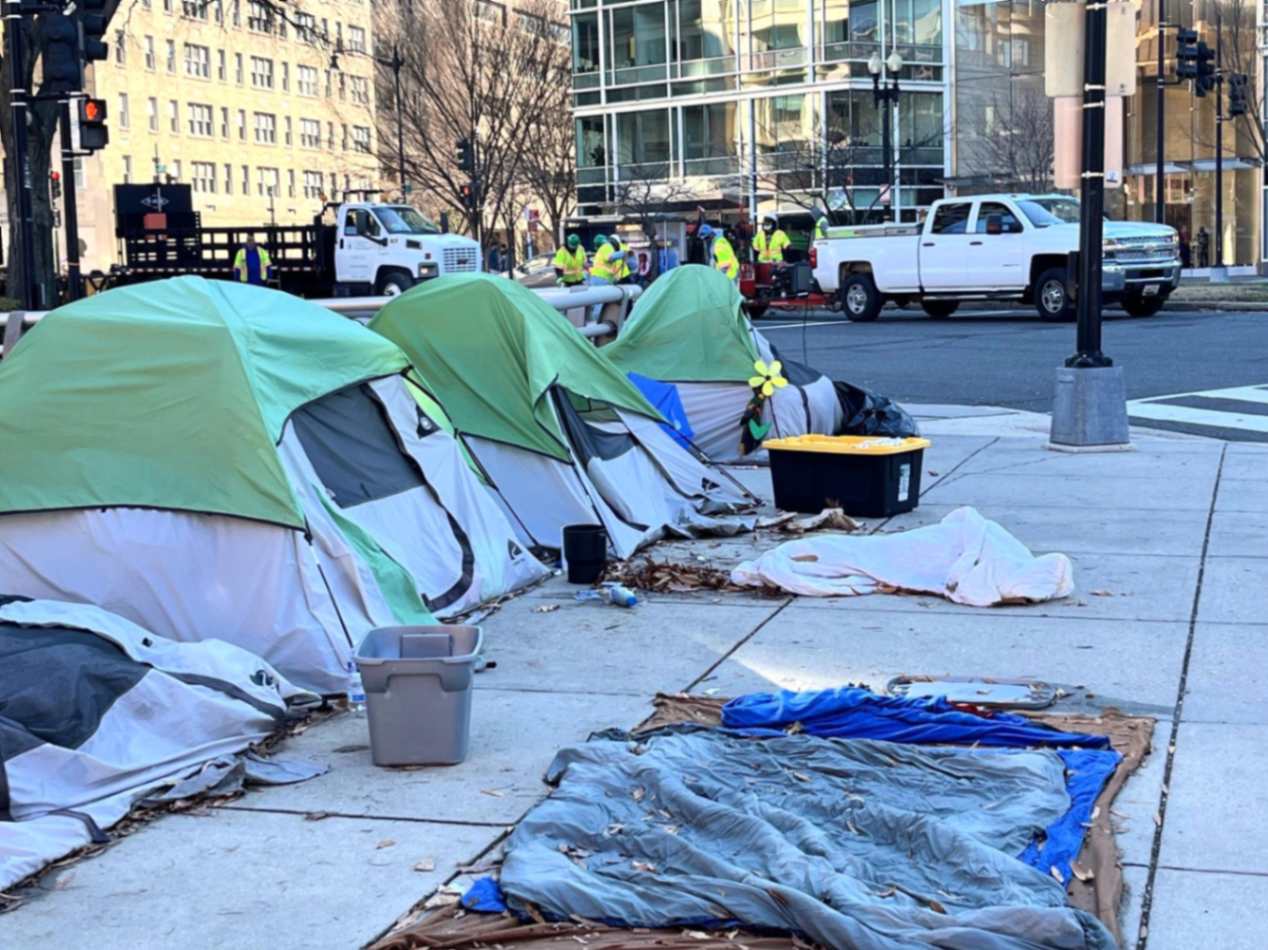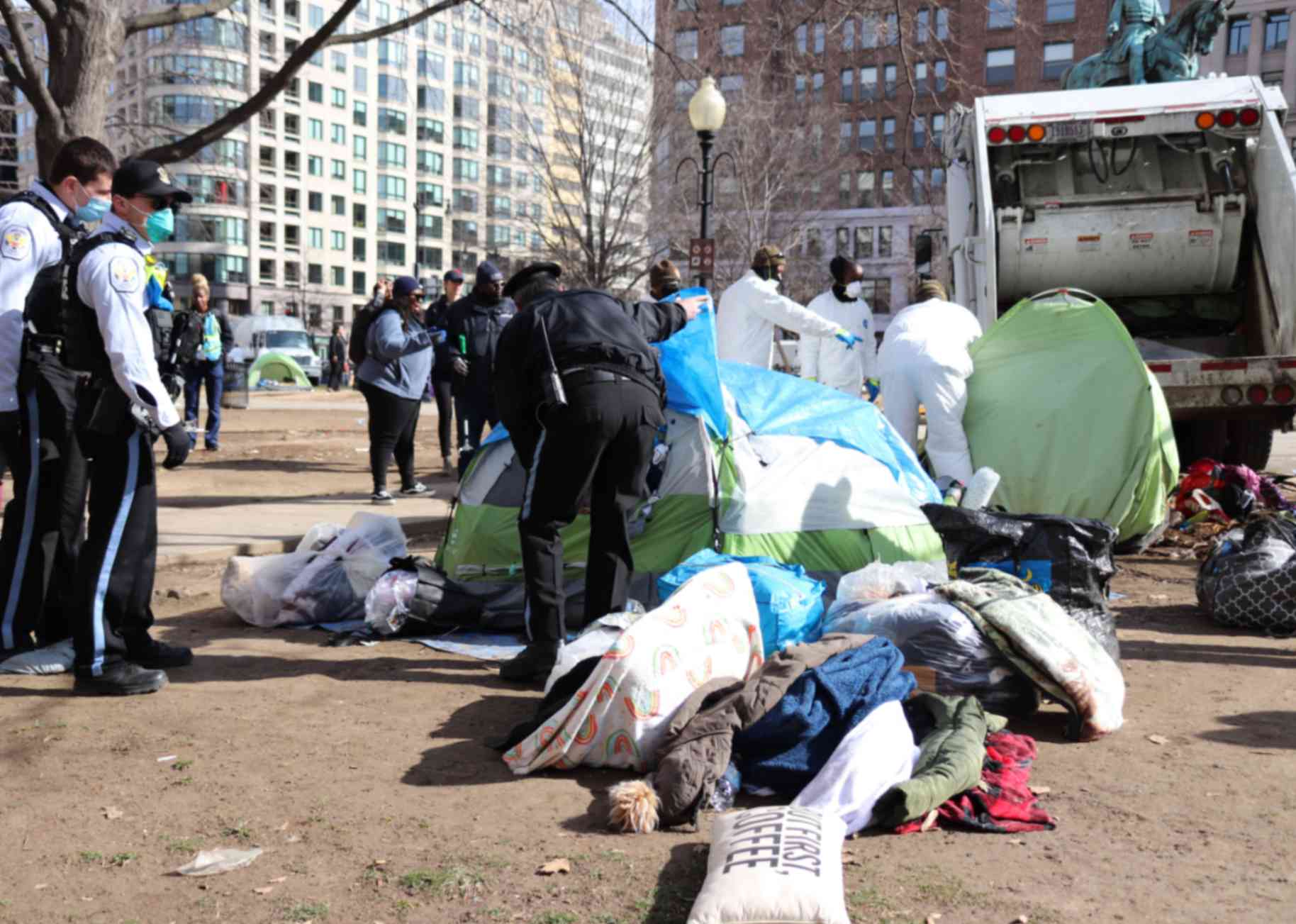 Mary Lord, TRB
Mary Lord, TRBHomeless encampments on transportation rights-of-way—otherwise known as encampments of unhoused, houseless, or unsheltered individuals—are a complex and ongoing issue in the United States, often raising social, health, safety, and legal challenges. Encampments typically appear near highways, bridges, and tunnels, prompting agencies at state and local levels, including state departments of transportation (DOTs), to address these encroachments. This responsibility is legally intricate, however, and falls under a range of constitutional protections and federal, state, and local laws.
National Cooperative Highway Research Program (NCHRP) Project 20-06/Topic 25-04, “Laws Governing Homeless Encampments in Transportation Rights-of-Way,” examined these intricacies. The resulting publication, NCHRP Legal Research Digest 87: Encampments of Unhoused Individuals in Transportation Rights-of-Way—Laws and State DOT Practices, aims to clarify the legal landscape surrounding the prevention and removal of homeless encampments on transportation rights-of-way, as well as the authorized use of these spaces for social services or shelters.
Legal and Constitutional Issues
At the federal level, homeless encampments raise significant constitutional issues, especially concerning the First, Fourth, Eighth, and Fourteenth Amendments. For instance, the First Amendment protects freedom of speech, which includes begging. However, it does not protect conduct such as aggressive begging or trespassing on public property. Under the Fourth Amendment, law enforcement actions to dismantle encampments and seize belongings may be challenged as unlawful search and seizure, often resulting in court rulings that favor homeless individuals. Privacy rights also complicate actions on public property, where personal belongings are less protected. Furthermore, the Eighth Amendment is frequently invoked against policies criminalizing homeless encampments, which some advocates for people experiencing homelessness view as a punishment for homelessness itself. This stance argues that prohibiting encampments without offering shelter effectively penalizes a person’s status rather than their actions.
The Fourteenth Amendment is relevant to antiloitering laws that often target homeless individuals in public spaces. Courts have scrutinized such laws under the amendment’s Due Process Clause, particularly faulting them for being overly vague, which can result in arbitrary enforcement.
Study Approach and Findings
To better understand the legal and operational environment, the study team analyzed various laws, surveyed state DOTs, examined ordinances from major metropolitan areas, and conducted interviews at relevant local agencies. A key focus was identifying policies and practices regarding encampment prevention, removal, and shelter provisions. The team found that legal frameworks governing encampments in transportation rights-of-way vary widely. Some states, for instance, have codified specific language on right-of-way use and encampments, while others rely on broader policies. Additionally, criminal trespass laws vary in scope and enforcement, with some jurisdictions requiring prior warnings for trespass to be actionable.
Survey results revealed that states handle the issue differently, based on the health and safety concerns associated with a particular homeless encampment. Many state DOTs noted that managing unauthorized access to rights-of-way often includes dealing with public health and safety hazards, including waste management, drug and alcohol abuse, and crime. Some state DOTs have begun coordinating with law enforcement and social services to mitigate these challenges and discourage encampments.
State and Local Practices
State and local practices to address homeless encampments often include the involvement of law enforcement and social services, especially for the removal of unauthorized encampments. Many state DOTs work with local agencies to provide outreach and give notice—typically ranging from 10 to 30 days—before enforcing the removal. Encampments on rights-of-way are sometimes addressed by installing signs, employing fencing, or altering landscapes to reduce accessibility, while some states also use bridge abutment designs that prevent occupation.
A range of legal issues emerges around liability and property rights for state DOTs, especially concerning the handling of personal property from encampments. In addition to legal considerations, there are practical concerns related to resource allocation, the training of state DOT staff, and safety for agency personnel and individuals in encampments. State DOTs also face challenges with maintaining and enforcing these policies consistently across jurisdictions. Further, a process that might appear effective in dealing with homeless encampments might only shift the issue to a different neighborhood or neighboring jurisdiction.
 Elvert Barnes, Flickr, CC BY-SA 2.0
Elvert Barnes, Flickr, CC BY-SA 2.0Policy Alignment and Legal Challenges
Several state DOTs have begun aligning their policies with those of local jurisdictions to streamline enforcement and enhance coordination. Some states that have experienced a growing number of right-of-way encampments have also passed new laws or adjusted policies accordingly. Nevertheless, many of these laws and policies are met with legal challenges, often based on constitutional rights, which results in ongoing modifications and settlements.
NCHRP Legal Research Digest 87 underscores the broader trend: While not all states face equally significant issues with homeless encampments, some are heavily affected, driving them to adopt proactive legislative and policy measures. However, these measures are typically under continuous legal scrutiny, especially when constitutional rights are implicated.
Since NCHRP Legal Research Digest 87 was published, the U.S. Supreme Court ruled in 2024 that cities and states can prohibit people experiencing homelessness from sleeping or camping on public property. The decision, which overturned lower court rulings that such bans violated the U.S. Constitution’s Eighth Amendment protections against cruel and unusual punishment, negates some of the legal challenges discussed in the digest.
Acknowledgments
The author thanks his NCHRP Legal Research Digest 87 co-authors Brianne Glover, Jacqueline Kuzio, and Beverly Storey of Texas A&M Transportation Institute.





